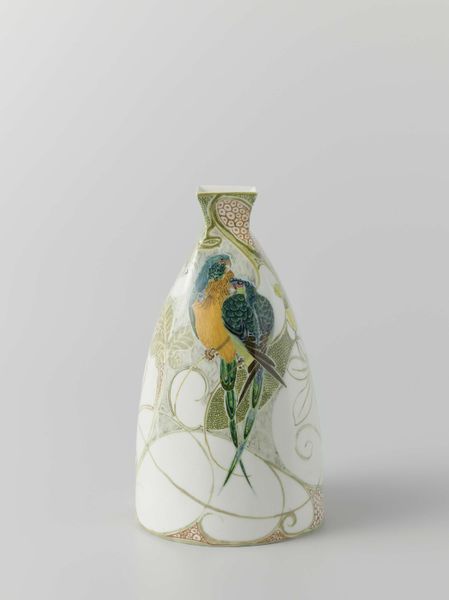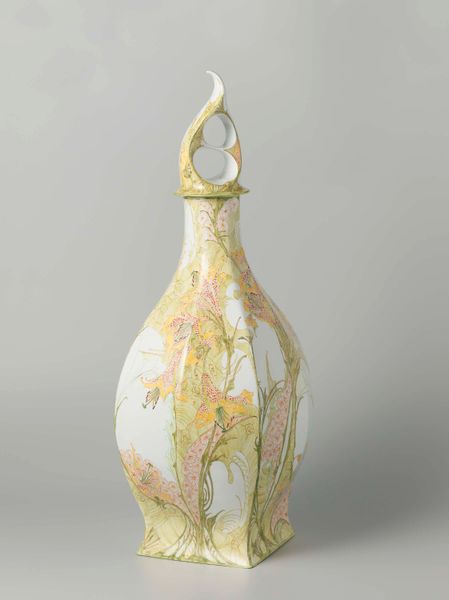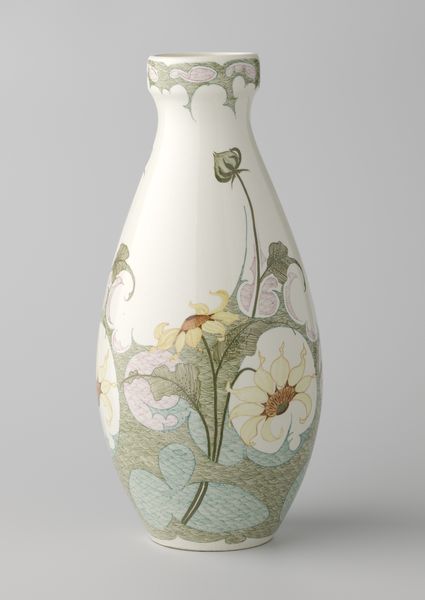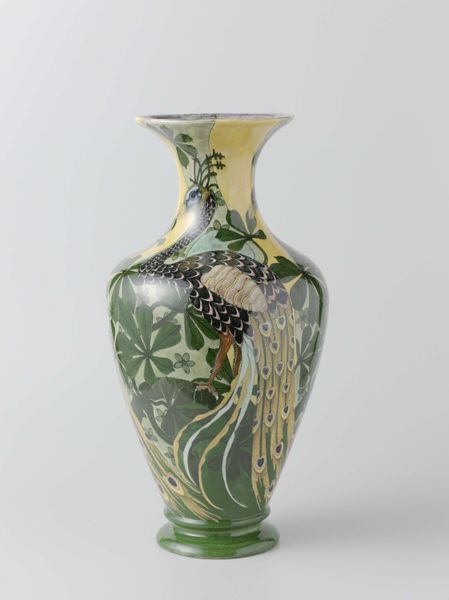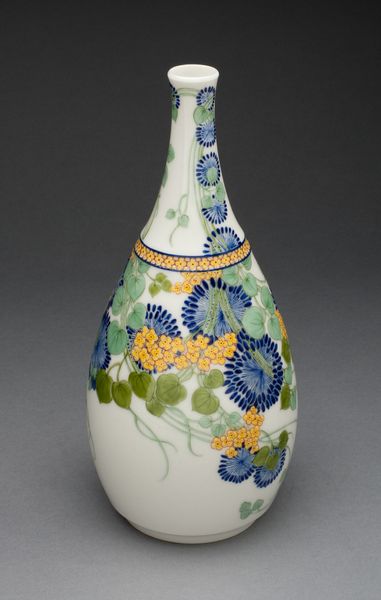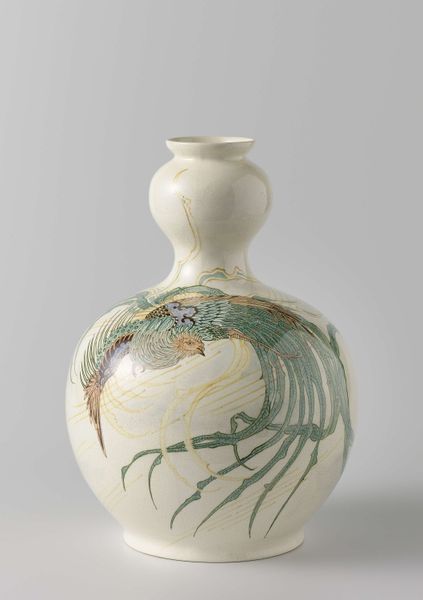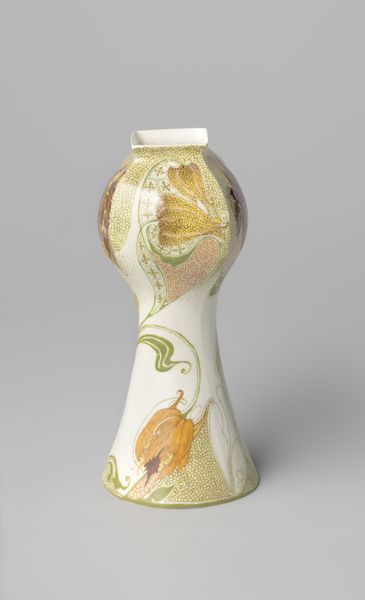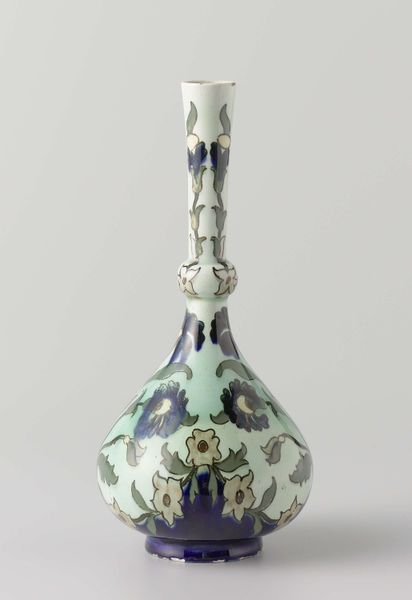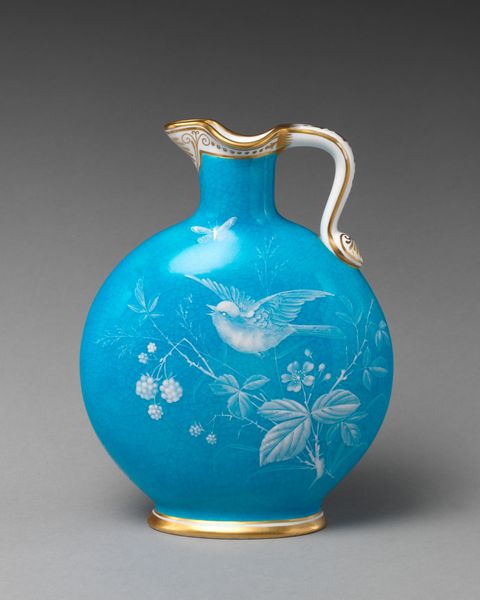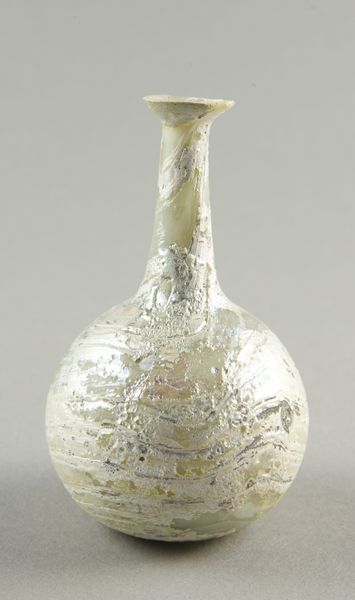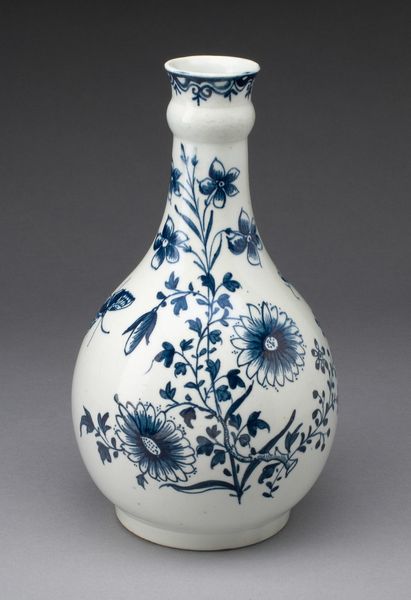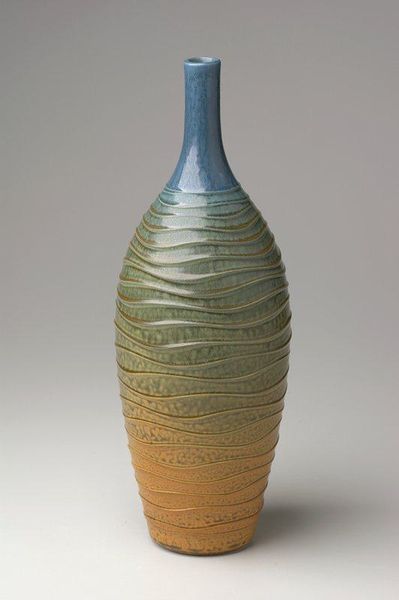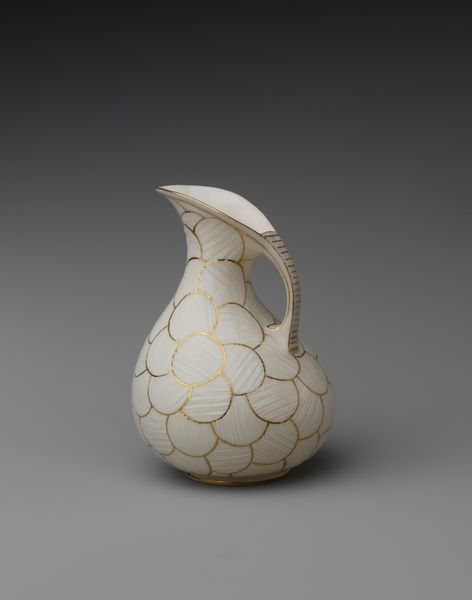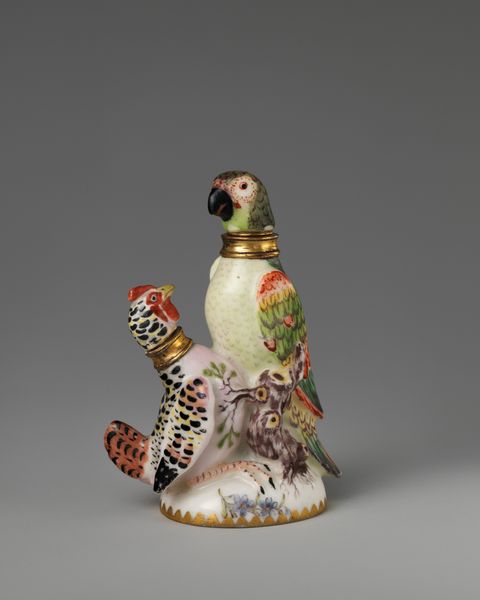
ceramic
#
art-nouveau
#
ceramic
#
figuration
#
stoneware
#
ceramic
#
decorative-art
Dimensions: height 22.0 cm, diameter 11.0 cm
Copyright: Rijks Museum: Open Domain
Editor: This is a ceramic vase from 1900, titled "Vase Painted with a Pheasant", created by the N.V. Haagsche Plateelfabriek Rozenburg. I'm immediately drawn to the almost melancholic mood it evokes, and how the artist has used the pheasant motif in a way that seems to be almost gazing upon its own reflection in the surface. How do you read this work? Curator: It’s fascinating, isn’t it? This vase resonates deeply with the Art Nouveau sensibility, where nature isn't just depicted but imbued with symbolism. Look closely – the pheasant, particularly in European and East Asian traditions, often signifies beauty, good fortune, and nobility. Do you notice how the flowing lines and the stylized foliage reinforce this sense of natural harmony, a key aspiration for Art Nouveau artists? Editor: Yes, I see what you mean. It is also very Japanese in style. The lines of the vegetation in particular feel as though I've seen them on traditional Ukiyo-e woodblock prints. It feels a bit dreamlike or ethereal. Curator: Precisely! The Rozenburg factory was deeply inspired by Japanese aesthetics and techniques. Now, think about the choice of rendering the pheasant specifically on a vase – a vessel. What does a vessel represent to us, culturally and psychologically? Editor: Hmm… Containment, maybe? A sense of preservation, holding something precious? Curator: Indeed. Consider that the vase itself, adorned with this symbol of prosperity and beauty, becomes a symbolic container of those very qualities, preserving and amplifying those meanings through art. Editor: I never would have thought about it that way, connecting the object's function to its symbolism. Curator: Exactly! It adds another layer to how we experience and remember this particular image and design over time. Editor: It definitely provides much food for thought about how symbols live beyond their literal representation.
Comments
No comments
Be the first to comment and join the conversation on the ultimate creative platform.
